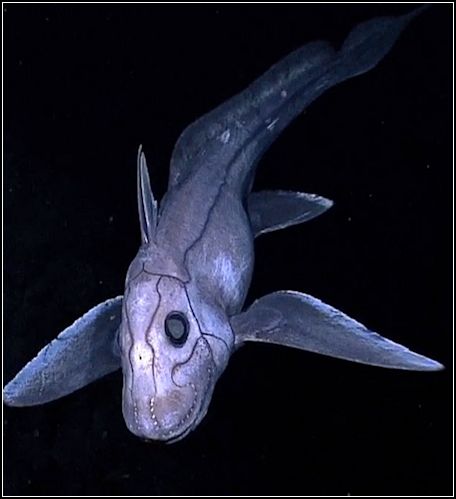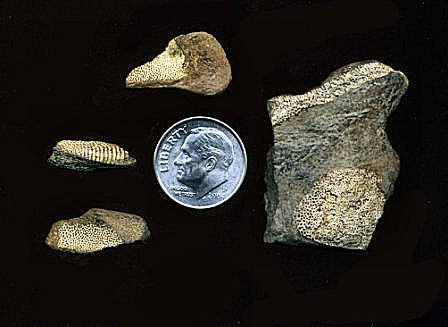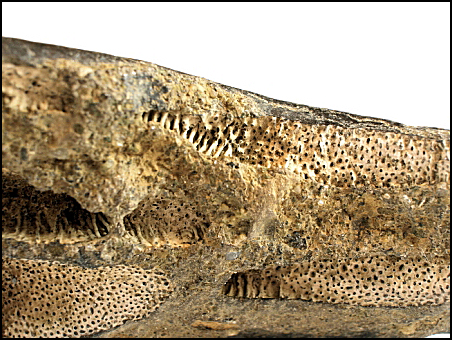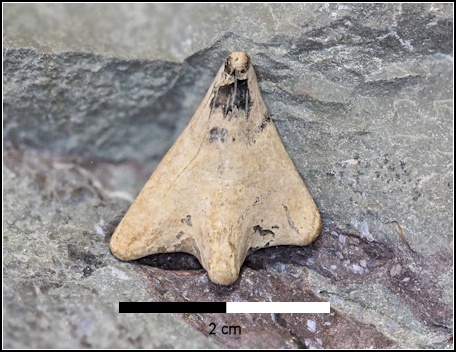|
RATFISH
Class
Chondrichthyes
Subclass Holocephali (Bonaparte, 1832)
Order Chimaeriformes (Buen, 1926)
Age Devonian - Present - Occurrence Common
Within the Order Chimaeriformes there are three families. This website
will only deal with the most common species found in the New Jersey
Cretaceous streams
Ischyodus
bifurcatus.
.
Family Callorhinchidae (Garman, 1901)
Genus Ischyodus (Egerton, 1843)
Ischyodus
bifurcatus (Case, 1978)
Unlike sharks that continually replace rows of teeth throughout their
life, chimaeras possess three pairs of mineralized tooth plates. They
used these teeth to crush bivalves, crustaceans and echinoderms
associated with the seafloor. Due to their cartilaginous skeleton,
specimens of early chimaeras are known from just isolated tooth-plates
and fin-spines.
Fragments of
chimaera
tooth-plates are common in the
Cretaceous streams of
New Jersey, finding plates
complete enough for identification is a bit more difficult. It's worth
mentioning that all the complete plates I've found are
Ischyodus
bifurcatus
palatine plates (identification by Dr. Earl Manning).

Deep-sea chimaera photographed by the NOAAS Okeanos Explorer.

Ischyodus
bifurcatus
palatine plate just a
little under 3 inches.
Monmouth County, NJ
Ischyodus
bifurcatus
palatine plates.
The palatine elements of I. bifurcatus contain 4 distinct
tritoral aspects, none of which are fused.
Monmouth County, NJ

An assortment of fragments, the
ones on the left are typical finds.

A close up of the
tritors.

Hybodont cephalic claspers.
Chimaera claspers and spines are rare. Chimaera and hybodont claspers
are very similar in appearance with a slight difference in the hook.
I've included
this picture to give the reader a general idea of what cephalic claspers look like.
References
CASE, G. R. 1978. Ischyodus bifurcatus, a new
species of chimaeroid fish from the Upper Cretaceous of New Jersey.
Return to top of
page
|